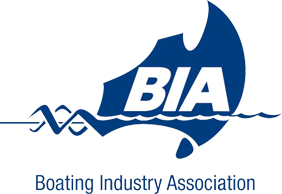Standing Rigging Replacement Process
10 May 2021Standing Rigging Replacement – The rigging of sailboats is generally comprised of stainless-steel wire, rod, composite fibres or rope that can support their masts and adjust the position of their sails and spars. There are two classes of rigging that are utilised on sailboats. The first one is the standing rigging, which is intended to support the mast. Running rigging, alternatively, is designed to control the orientation and positioning of the sails.
While rigging components are often made from durable materials, there are still some parts and components that require replacement over time. It is a good idea to have your spars and rigging inspected regularly by a yacht rigger to ensure that issues are identified before any further damage is sustained or to prevent a major failure of equipment.
Rigging replacement, or the re-rigging process, serves as a preventative measure for your sailboat’s health. And to carry out this process effectively, here are some things that you should remember.
Checking the Current Setup
Looking back at your current setup can provide you with some details about the rigging components that work great for your sailboat. If your rigging components have been performing well in the past, then it would be best for your rigger to copy their current settings. After all, your main goal for the re-rigging process is to replace and replicate all possible functional elements of your old rigging with new rigging. It is important for your rigger to document the amount of turnbuckle adjustment that is required to “detune” your mast prior to removal. This will ensure you maintain an adequate amount of adjustment on the new standing rigging, also allowing fine-tuning to achieve the desired mast tune.
Conducting a Full Survey
Before buying any parts of your rigging, your yacht rigger will first conduct a thorough survey that will ensure they order the right rigging components. The survey will mostly include the specifications of your rigging, which comprise of its diameter and length, pin and thread dimensions and any other design aspects. Once your rigger has identified the needed specifications, you must confirm if you need any changes for your rigging.
Placing Important Markings
All the settings that are present from your current rigging setup must be determined and marked before disconnecting or loosening the parts of your rigging. The marking of your settings can be done by placing some tape or measuring and documenting the lengths. The important markings of your rigging setup can also be saved by taking some photos. Documenting these settings can make your re-rigging process much easier as your rigger will not have to restart and find the appropriate settings for your rigging.
Acquiring the Needed Parts
Once everything is checked and documented, it is time for your mast to be removed. Once the mast has been removed your rigger will be able to remove all the old rigging components and begin making the new rigging. It is vital that the rigging components used are rated or certified and come from a reputable supplier. It is important that your rigger replaces all components of your standing rigging including clevis pins to ensure that there is no weak link throughout the length of your rigging. Once your rigging has been replaced, your mast can be reinstalled, and your rigging adjusted to its original settings. Now it’s time to check the mast tune and make any minor adjustments before locking the tune in place.
If you need help with rigging parts, feel free to contact us at Riggtech.
Optimized by: Netwizard SEO


